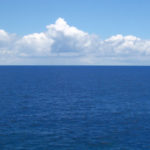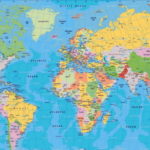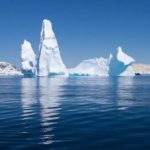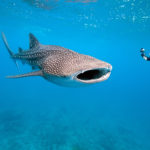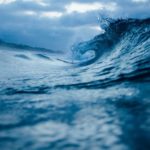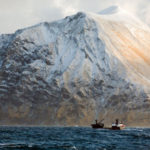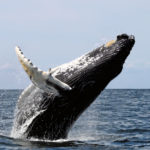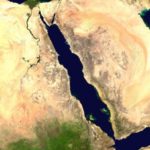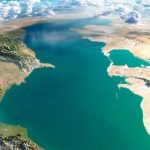Oceans and Ocean currents: The Northern and Southern Hemispheres
Oceans cover nearly three-quarters of the Earth’s surface. Large areas of water are called oceans, and they usually separate the continents. Smaller areas separating islands or enclosed by land on several sides are called seas, gulfs or bays, channels, or straits. The waters separating Britain from the mainland of Europe are called the English Channel and the North Sea. The Gulf of Mexico and the Caribbean Sea separate North and South America from the West Indies.
There are five oceans. The Pacific Ocean, between America and Asia, is the largest and deepest, covering a third of the world’s surface. It extends one-third of the way around the world at the Equator. The Atlantic Ocean separates America from Europe and Africa. The Indian Ocean is bordered by Africa, Asia, and Australia. The Arctic Ocean lies between the land masses around the North Pole and is covered mostly by ice. The waters around the Antarctic continent are called the Antarctic Ocean, but they do not have bordering land masses like the other oceans.
Around most coasts, there is a shelf of land extending out from the coast under the sea. As a fact, this shelf, called a continental shelf, has a depth of up to 600 feet. It may extend for several hundred miles, and then the sea floor falls steeply away to the ocean bottom or the abyss. The abyss is about 12,000 to 16,000 feet deep. It consists of great plains, called abyssal plains, crossed by ridges and mountains and by deep trenches. Islands occur where the undersea mountains, often volcanic, break the surface.
The deepest known spot on earth is the bottom of the Mindanao Trench off the Philippine Islands in the Pacific Ocean. It is 37,782 feet deep, over seven miles.
The oceans abound in life. Light penetrates the sea down to about 500 feet, and no plants can live below this depth. Thus the upper layer of the ocean and the continental shelf are rich with animal and plant life. The fish in the upper layer live down to a depth of about 2,000 feet. And below this depth, strange deep-sea fish prowl.
The ocean is constantly on the move. Waves rise and fall on the surface, caused by the wind. Waves in the open sea are rarely more than about 10 feet high, but in severe storms, they may reach a height of more than 100 feet. If such waves reach the shore, they cause great damage. But the most destructive waves are tsunamis, named after the Japanese word for great wave and often incorrectly called tidal waves. They are not caused by tides or by the wind, but by undersea earthquakes or volcanic eruptions that shake the sea floor. Tsunamis race across the ocean at great speeds.
Ocean currents
Ocean currents are general movements of warm and cold water throughout the world’s oceans. There are several great systems of ocean currents, affect life in the sea and the climates of bordering lands.
Oceans began as the water came out of the rocks or fell from the sky as rain when the Earth cooled from its original molten state. It filled great basins formed of heavy rock, surrounding the higher land masses of light rock. The land masses gradually moved apart, eventually forming the continents and oceans in the positions they occupy today. As rivers ran over the land into the sea, they dissolved minerals from the rock.
Man has many uses for the sea. Many people depend on fish and other sea animals for food. Useful substances such as iodine and magnesium can be extracted from salt obtained by evaporating seawater in salt pans. Other useful products from the sea include sponges and seaweeds. Trade is carried by ships across most of the world’s oceans and seas. Men are beginning to harness the tides to produce electricity, and to use nuclear power to extract fresh water from seawater.
The Northern and Southern Hemispheres
Ocean currents are great streams of water moving slowly through the world’s oceans. They flow at all levels. Surface currents are caused mainly by winds; deeper currents depend on changes in temperature and other properties of the water.
The main surface currents follow the paths of the prevailing winds. The North and South Equatorial Currents flow westward parallel with the Equator. Nearer the Poles this water returns eastward as the West Wind Drift in the Southern Hemisphere and the North Atlantic and North Pacific Drifts in the Northern Hemisphere. Altogether there are five great circular ocean movements, clockwise in the north, anticlockwise in the south. There are two in the Pacific Ocean, two in the Atlantic Ocean, and one in the Indian Ocean (which lies mainly south of the Equator).
Currents have no definite boundaries, and a slow-moving wide current is often called a drift. Ocean currents can greatly affect the climate of the coasts near which they flow. The warm waters of the North Atlantic Drift, washing the coast of northwest Europe, warm the winds passing over them and give Norway an ice-free port well within the Arctic Circle. Yet, on the other side of the Atlantic, the cold Labrador Current, sweeping down from the Arctic, gives Labrador a mean January temperature as much as 45 F below that of Scotland on the same latitude, and freezes the coastline down to the equivalent of southern France.
Deep currents consisting of cold and denser water flow beneath the surface currents. From the North Atlantic, a cold deep current flows south to the Antarctic, where it brings plant nutrients to the surface and supports a large animal population, including seals and whales. An even deeper cold current flows back towards the Equator under this Arctic current.
The surface currents of the oceans follow prevailing winds. The map of currents in January shows that they form a series of nearly closed loops, which rotate clockwise north of the Equator, and counterclockwise to the south. In July, the Indian monsoon winds blow eastward and the monsoon drift changes direction.


